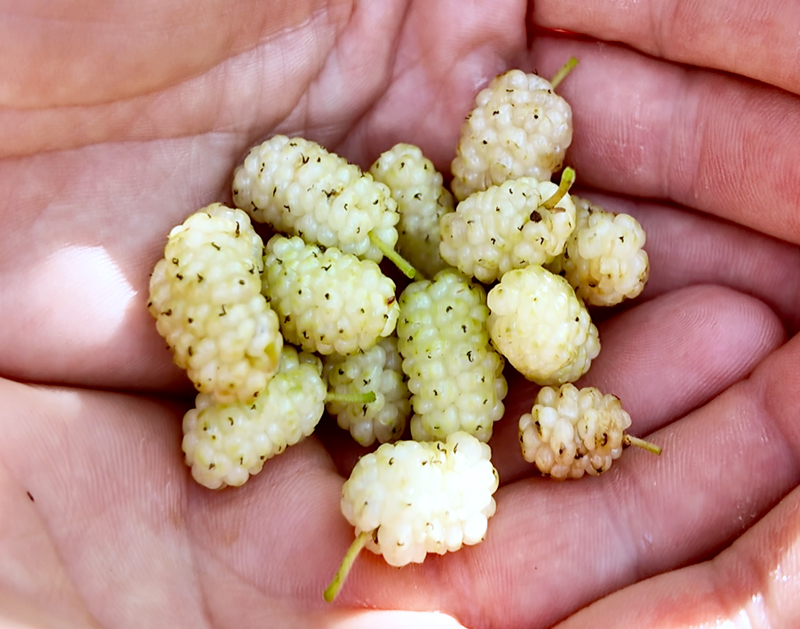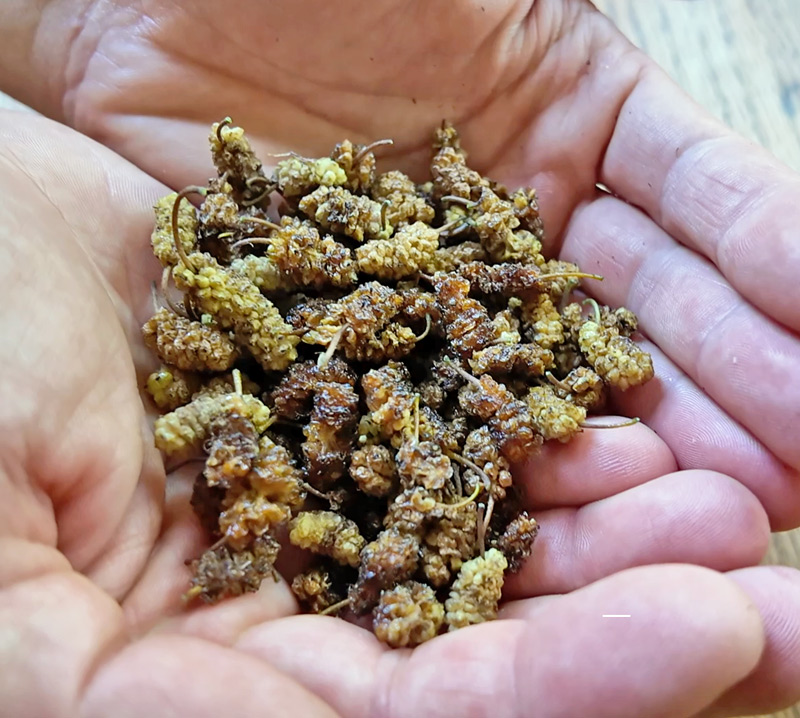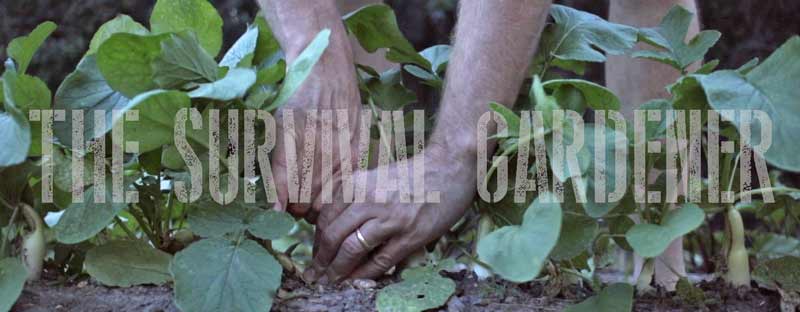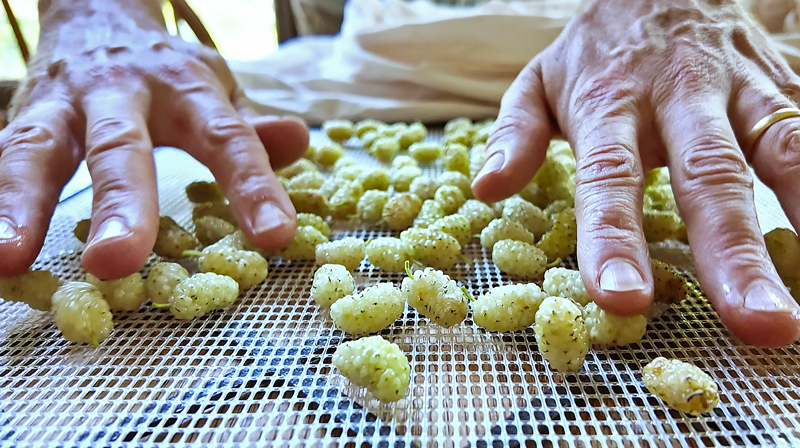Some years ago, I visited a piece of property a relative was leasing to start a business. It was a 1970’s commercial building, with a wrap-around parking lot. The lot was weedy and unkempt, with scrubby landscape plants and Mexican poppies growing alongside and in the cracks in the sidewalks.
Then I saw a small tree with familiar leaves. A mulberry! On closer inspection, I saw it was fruiting. But the fruit weren’t turning purple. Instead, they were white!

Whereas “normal” mulberries ripen from green to red to purple-black, these went from green to a semi-translucent white with a tinge of green, and sometimes a blush of pink or purple.
The flavor is different from the standard black mulberry fruits as well. More like honey, or just plain white sugar.
When dried, they are really delicious, with a honeyed currant flavor.
I asked to take some cuttings, and successfully rooted a few which I planted in my North Florida Food Forest Project. When we moved overseas, I left those trees behind – but when we moved back to the states, I hunted down some white mulberries again, this time from Burnt Ridge Nursery.
I planted both of them in my Grocery Row Gardens. One variety (Ivory White) makes slightly larger fruit with a slight purple blush, the other one (I forget the cultivar) makes green-white fruit. Both taste less complex than black mulberries, and I don’t think they are as good in cobblers or in jam, so into the dehydrator they go.
They don’t look great when dehydrated, but the flavor is greatly enhanced – they are delicious!

You can see the harvest video here and get a closer look at the trees:
I would not be without mulberries in my gardens – and the whites have been outstanding producers this year.

